Rare Rides Icons: The Lincoln Mark Series Cars, Feeling Continental (Part XVI)

The new Continental Mark III coupe was a smash hit at its debut in 1969. The Thunderbird-based design proved a cost-saving device for the Lincoln-Mercury Division and put the company’s revenue in the black for the first time in a while. After an exceptionally long model year in 1969, regulatory forces, trim edits, and cost-saving measures took place for the model’s second year in 1970. We covered the exterior changes last time, and today slide into bucket seats in our polyester suits.
In context the Mark III looked all the more upscale in 1970, as it occupied Lincoln lots with a line of Continental two- and four-door models that closely resembled the Mercury Marquis upon which they were based. The other Continental models had reverted to body-on-frame designs in 1970, as Lincoln sought to save money and abandoned unibody platforms it had toyed with since the late Fifties.
Buyers would easily note the 1970 Mark III had a nicer interior than the 1969. A more upscale look was achieved via the replacement of fake wood for real walnut trim. Said real wood trim was more plentiful than before, courtesy of a redesigned door panel.
The 1969 Mark III used a thin strip of wood trim on the door that was interrupted by the door pull. In 1970 the door pull moved southward and got larger and sturdier-looking. The thin wood trim strip stayed put but was supplemented by a new wood panel in the middle of the door.
The panel had a Continental logo in the middle of it and was trimmed with chrome. This new assembly was set within a padded door panel that looked simpler and had an indented design sans diamonds and button detailing like 1969.
Seat cushions had a new design in 1970: Seat bottoms and backs used four triangles that merged to form a large square, and were decorated with a single button. The design was more modern than the 1969’s diamond design and looked a bit more cohesive via its fewer buttons. Assembly of the seats was different in 1970, as the button controls that were located on the seat bottom moved to the door panel for easier access.
Sales of the Mark III continued at a brisk pace as the more conservative Continental coupe faded into the shadows at Lincoln dealerships. And though it was immensely popular, the Mark III had just one more model year outing for a total of three. 1971 was a year of celebration for Lincoln, as the company reached its Golden Anniversary.
Worth noting, it wasn’t actually a (50th) Golden Anniversary, as the company was founded in 1917, produced its first car in September of 1920, and became a division of Ford in 1922. Pick your favorite Golden Anniversary date, but it wasn’t 1971. Ford celebrated with a Golden Anniversary Town Car package on the Continental, which was only available in gold metallic paint and offered only to current Lincoln customers. It also had gold keys.
As far as the Mark III was concerned, only minor changes were made in its final year. Ford had already spent some money making required federal updates (which changed the looks) to the Mark III in its second outing, so there were almost no exterior changes for its final year. Even the wheel covers remained the same as they were in 1970. 1971 examples of the Mark III could be identified occasionally by their standard green tinted glass, formerly a commonly fitted optional extra.
Other options made standard in 1971 were the SureTrak anti-lock brakes, their presence indicated by branding emblazoned on the brake pedal. Elsewhere in the interior, a previously optional seat design with a higher back became standard, with a caveat.
Said seat design was made standard at some point during the model year, as many 1971 examples do not have the seat as pictured here. Seating patterns and other interior trim were not altered for 1971. Seldomly selected was a new optional floor console, which was a special order item.
The Mark III’s 460 V8 remained in place, though the smog pump “Thermactor” system got more complex. It had additional ductwork associated with it in 1971, as engine bays and power figures headed toward their mid-Seventies hot mess status.
Beginning in 1970 Motor Trend ran a King of the Hill contest, where head-to-head entrants were the Continental Mark III and the Eldorado. And both times the Mark III narrowly defeated the Eldorado. The gap grew larger in its second winning, as the magazine’s editors noted how the Mark’s leather interior was nicer than the cloth on the Eldorado. The wood on the dash also impressed, because the Cadillac had faux paneling.
Motor Trend’s findings aside, consumers were voicing their opinion with their wallets. After 30,858 Mark IIIs sold in 1969 (half Lincoln’s total sales), 21,432 more were sold in 1970. Keep in mind that the 1969 year was 22 months long given the Mark’s springtime debut. In its second year, the Mark III represented 36.2 percent of Lincoln’s 59,127 sales.
In 1971, Lincoln's production increased a bit to 62,642, where 27,091 were the Mark III (43.2 percent). The increase in sales was notable in context because Cadillac had just released a new E-body Eldorado in 1971 complete with big and bold Seventies styling. The Mark III looked restrained and elegant in comparison, and it still wasn’t front-wheel drive.
Cadillac moved 23,333 Eldorados in 1969, and sales increased to 23,842 in 1970 as the coupe entered the final year of its eighth generation. In 1971 sales hit a record for the nameplate, at 27,638. The Continental Mark III had proved in short order that it was on par with the long-established Cadillac Eldorado, a great success for Lincoln.
Pricing increased on the Mark III as it aged, with a 1969 ask of $6,740 ($56,072 adj.) bumped to $7,281 ($57,048 adj.) in 1970. There was a notable increase in base price in Mark III’s last model year, as it had the most standard equipment ever offered: $8,420 ($62,657 adj.). Pricing initially compared almost exactly to the Eldorado, which in 1969 asked $6,710 ($55,823 adj.). But by 1971 GM cut the cost of its flagship coupe, which ranged from $7,480 to $7,750 ($55,662 to $57,671 adj.).
For 1972, Lincoln was ready with a new and more Seventies body style to compete with the new, more Seventies Eldorado. The Continental Mark IV would have a longer model cycle than its predecessor and was longer physically, too. Lincoln knew customers wanted more from a personal luxury coupe as the disco era dawned. There was one aspect of “more” they probably didn’t want, but Lincoln gave them anyway: more parts sharing with Thunderbird. Mark IV is next time.
[Images: Ford]
Become a TTAC insider. Get the latest news, features, TTAC takes, and everything else that gets to The Truth About Cars first by subscribing to our newsletter.

Interested in lots of cars and their various historical contexts. Started writing articles for TTAC in late 2016, when my first posts were QOTDs. From there I started a few new series like Rare Rides, Buy/Drive/Burn, Abandoned History, and most recently Rare Rides Icons. Operating from a home base in Cincinnati, Ohio, a relative auto journalist dead zone. Many of my articles are prompted by something I'll see on social media that sparks my interest and causes me to research. Finding articles and information from the early days of the internet and beyond that covers the little details lost to time: trim packages, color and wheel choices, interior fabrics. Beyond those, I'm fascinated by automotive industry experiments, both failures and successes. Lately I've taken an interest in AI, and generating "what if" type images for car models long dead. Reincarnating a modern Toyota Paseo, Lincoln Mark IX, or Isuzu Trooper through a text prompt is fun. Fun to post them on Twitter too, and watch people overreact. To that end, the social media I use most is Twitter, @CoreyLewis86. I also contribute pieces for Forbes Wheels and Forbes Home.
More by Corey Lewis
Latest Car Reviews
Read moreLatest Product Reviews
Read moreRecent Comments
- Lorenzo If it's over 30 years old and over 80k miles, and not a classic, it's a parts car, worth no more than 20% of original price.
- Dusterdude No mileage noted on a 33 year old car means likely well north of 300k + miles , along with issues noted , should equate to an ask price of less than $3k
- Ajla IMO, something like this really should be naturally-aspirated.
- Kjhkjlhkjhkljh kljhjkhjklhkjh Unless they are solid state batteries you BAN THEM. I like EVs... but EVs like to burn ... for days
- Kjhkjlhkjhkljh kljhjkhjklhkjh uh .. it looks like a VW golf got the mumps



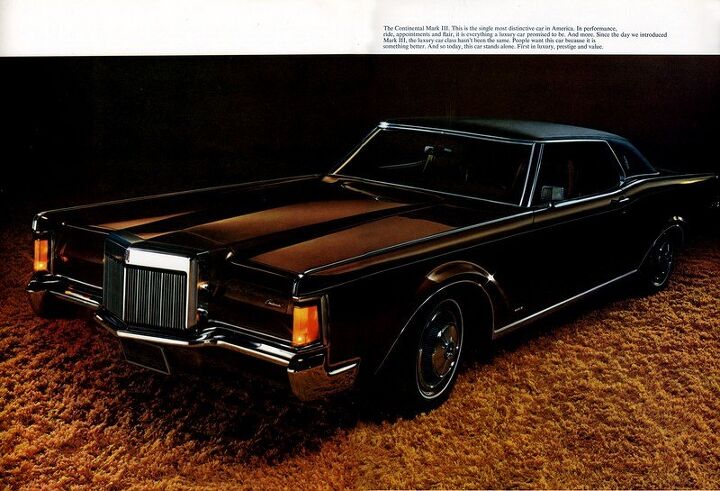






















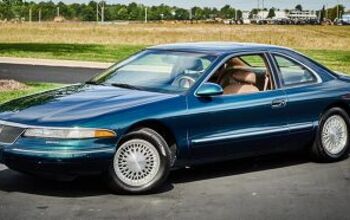
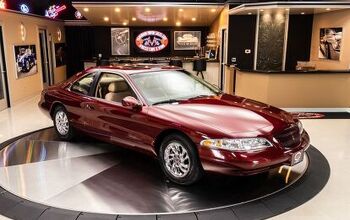
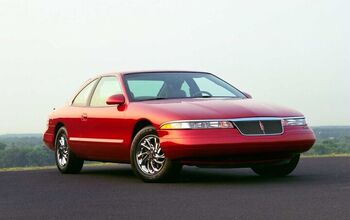
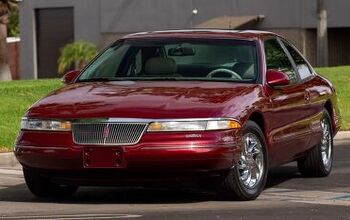
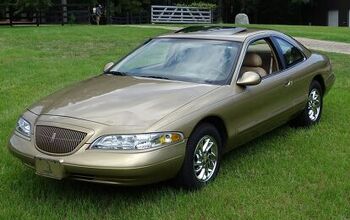










Comments
Join the conversation
The '70 Continentals and Town Cars may have been cousins to the standard body Fords and Mercurys, they didn't have to be disguised, because they had unique, unbelievably huge bodies of their own.
Looking at the new 1970 interior, I'd say it was also a cost savings in sewing the seat. Button tufted panels like the 1969 interior had require a lot of sewing and tufting work. The 1970 interior is mostly surface sewing on a single sheet of upholstery instead of laboriously assembled smaller pieces.
FINALLY: do I remember correctly that the shag carpet shown under these cars was a Photoshop? They didn't really go so peak '70s as to photograph cars on shag carpets, did they?
The absolute best series on TTAC and so few responses? I am going to assume that the readership (B&B) is either too young or did not have enough 'coin' to have enjoyed these vehicles during their heyday.